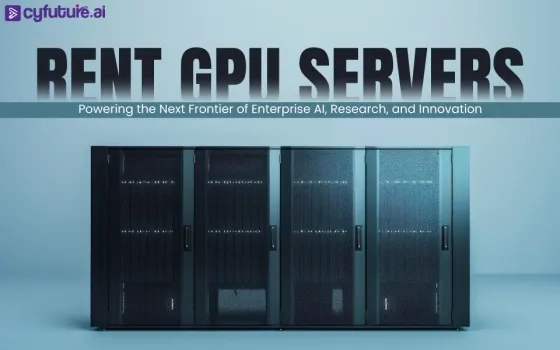As companies are increasingly creating and capturing larger volumes of data from an ever-expanding number of data sources, the need for an agile, scalable, and powerful data ecosystem has become more pressing than ever.
The traditional centralized data architecture is no longer effective in managing and capturing true value from the vast volumes of data that are available today. Enter data mesh, a new architectural approach that calls for a new mindset toward data and its usage across the enterprise.
In this article, we will explore the exciting new world of data mesh, the key principles it rests on, its top business advantages, and how you can develop and integrate this new approach to data management in your organization to stay ahead of the competition in today’s data-driven landscape.
What is Data Mesh?
The term, ‘data mesh’ was first coined by Zhamak Dehghani in 2019 in her article titled “How to Move Beyond a Monolithic Data Lake to a Distributed Data Mesh.” In the article, Dehghani promotes the idea of domain-driven design, where business teams own the data to address the most pressing business questions autonomously, with zero bottlenecks.
Deloitte defines the concept of data mesh in a very concise way. The website says, “... Data Mesh has been very interesting for enterprises seeking fast time-to-market with growing data sources/ volumes. This is achieved via decentralizing the data responsibility to the domain level and making high-quality transformed data only available as a product. Business domain knowledge is preserved while making the data available to the rest of the business. Data engineers do not have to sieve through unfamiliar data, often dumped in data lakes from multiple sources.”
Data mesh is a paradigm shift in data management. Implementing a data mesh can enable an organization to build more empowered teams across functions and mitigate the risks associated with business and customer data. A robust data mesh architecture is built on four key principles.
Data Mesh principles
Data mesh is not a data storage technology like an enterprise data lake or data warehousing services. Instead, it’s a journey toward building an ecosystem where teams can access the data they need at the speed of business and use the insights to respond rapidly to changing market demands. Data mesh, as a concept, revolves around four key principles, which are, a) Data ownership, b) Data as a product, c) Self-service data infra, and d) Federated governance.

- Data ownership: The data mesh architectural approach takes a domain-driven design route where data belongs to specific business/domain teams. Each domain is owned by a department/team, such as marketing and sales, that is self-reliant in creating these data products.
- Data as a product: Data mesh encourages teams and organizations to see data as a product with immense value. To be of value to the organization, the data must be a) Discoverable, b) Addressable, c) Self-describing, d) Secure, and d) Trustworthy and Interoperable.
- Self-service data infrastructure: Data mesh encourages departments to own the responsibility of creating data and making them accessible and valuable for data consumers across business processes.
- Federated governance: For the data mesh to work, it is critical that the data domains, platforms, and products are interoperable and governed by standardized conventions.
Key benefits of using a Data Mesh
A data mesh is a philosophy aimed at unleashing the full potential of data to drive decision-making and improve operations and profitability across the enterprise. Hiring the services of professional data science consulting companies can accelerate the implementation, which can lead to a multitude of benefits.
To begin with, organizations can rapidly respond to changing business needs and make data highly accessible to those who need it across teams and departments. Furthermore, the distributed nature of a data mesh ensures that it can be scaled up or down as per the demands without sacrificing performance or reliability.
A data mesh architecture also separates datasets into domains such as customer service, sales, and marketing. The approach streamlines data access and management, making it easier for organizations to maintain regulatory compliance. This is especially critical for businesses operating in highly regulated domains such as healthcare and financial services.

When does it make sense to consider implementing a Data Mesh architecture?
According to Deloitte, “A data mesh strategy could benefit organizations that have a diverse data landscape with various different business domains. It can help organizations that are highly decentralized or looking to be, as the data mesh structure allows different teams to manage their own data and only make quality data available to the rest of the organization as a product.” In essence, implementing a data mesh architecture can benefit any organization that wants to harness the power of data to drive decision-making and enhance customer experience (CX).
In essence, an organization can consider a data mesh architecture if its data ecosystem has become too complex to be effectively managed by a dedicated data team. Here are a few scenarios where implementing a data mesh architecture can help:
- Data teams are feeling increasingly overwhelmed tracking, storing, and managing requested data across the enterprise.
- Centralized data architecture is failing to yield desired results as teams across departments are struggling to meet their unique data needs.
- The organization is operating in a highly regulated industry where it must protect data integrity and confidentiality, which requires customer and business data to be managed by separate teams.
- The organization is moving quickly or is planning to merge in the near future leading to more challenges in data access and management.
- Multiple teams across functions are struggling to access or manage data due to a centralized and complex data architecture or poor data quality.
To build a competitive moat and manage data at the speed of business, an organization can consider taking steps toward building a data ecosystem. However, it’s essential to understand that a Data Mesh architecture is not a one-size-fits-all solution and requires a clear strategy and access to skilled internal and external resources. To make a smooth transition, IT leaders can team up with trusted data management services companies
Preparing your organization for a successful Data Mesh implementation
Despite everybody discussing data mesh and its importance, it is still a fresh concept and might not be suitable for all types of businesses. However, at a high level, a mid-sized and large organization experiencing data chaos can consider moving towards a data mesh mindset. If you’re preparing for data mesh adoption, there are a few steps you can take to ensure a smooth transition period.
- Determine the data mesh solution that meets your needs: You must have a vision. Remember, data mesh is not a one-time investment. Instead, it’s a journey towards decentralizing the data, driving a domain-driven design, and making data a more secure, identifiable, and valuable product. Therefore, you must identify a solution you can implement based on your business goals on your current data infrastructure. To accelerate the process, you can even partner with a vendor with a solid track record of effectively helping companies with their data challenges.
- Get buy-in from stakeholders: Implementing a data mesh solution requires investment. It is, therefore, critical to involve key departments and leadership right from the start. So they can understand and share your goal of empowering teams to create business value from the received data.
- Ensure platform readiness: To harness the full potential of a data mesh solution, it is essential to analyze the current data ecosystem and ensure that it is compatible with the planned solution. This step also involves ensuring deployment readiness following CI/CD best practices.
- Educate teams about data mesh benefits: To ensure a frictionless adoption of data mesh solutions, businesses must train their teams. You can design programs to educate teams on data mesh and its benefits and convey the organization’s step in this direction. It’s also critical to highlight the benefits to the individual teams and the overall ROI.
- Incremental adoption is the key to success: Adopting data mesh is not something that you can or would like to do in one go. Instead, like all good and significant changes, the best approach is to build a plan for its incremental adoption across the enterprise. A data management consulting services company can help you strategize and implement a data mesh architecture within your organization. You can start with a pilot project or proof of concept. Once the teams are used to the new way of working with data, you can expand the adoption. This approach allows you to test and refine your data mesh architecture in a controlled environment and adjust based on feedback and lessons learned. You can also demonstrate the value it generated to the stakeholders and build momentum for broader adoption over time.
The bottom line
Traditional data systems often fail to deliver on their promise; as a result, businesses find it increasingly difficult to extract value from data at the speed of business. This is leading many organizations to consider taking a decentralized approach — the data mesh — that puts data in the hands of domain experts while following a shared governance framework.
Implementing the data mesh architecture requires a shift in the mindset more than introducing new technologies and platforms. And as Dehghani summarizes, “The approach is a mesh of data organized around domains, owned by cross-functional teams, and managed by centralized governance to allow interoperability, and served by a self-serve infrastructure.”





























